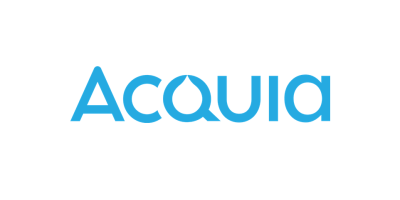
Our Path to Building Accessible Software for All Users

Inclusion is central to our values and culture at Acquia. It’s reflected in our exceptional customer service, respect for teammates, and commitment to building quality software.
Our interest in building a digital experience platform (DXP) that’s accessible to all users is a natural extension of our corporate culture and mindset around diversity and inclusion. Because this work is so pivotal to who we are, we’d like to share more about our efforts to meet accessibility standards across the organization.
Who benefits from accessible software?
One in four American adults (or 61 million people) have some type of disability, and accessible products and services — including software — can meet their needs. What’s more, designing with accessibility in mind creates a more positive experience for everyone. For example, curb cuts for wheelchairs also help people pushing strollers, rollerblading, or jogging. And glass doors that slide open when approached help anyone carrying grocery bags or delivering packages.
Ultimately, accessible software benefits people of all abilities.
The same is true for accessible software. It can help people with a temporary impairment, such as a broken arm. Or it can account for limiting circumstances, like reduced access to light or sound. It also considers mobile responsiveness for people using a range of devices, screen sizes, and input modes. Ultimately, accessible software benefits people of all abilities.
A priority at Acquia
Acquia’s commitment to designing accessible software began in earnest in 2016 with the formation of our user experience (UX) team to develop research-based strategies that improve our products’ usability.
Since then, the UX team has expanded to become the Product and Service Design team, partnering with Product and Engineering to deliver an end-to-end experience that meets the needs of all users.
Design always comes back to human needs, and in today’s digital ecosystem, there’s nothing more important than delivering an inclusive experience that focuses on both usability and accessibility. Throughout the software lifecycle, our product designers advocate for and specify design requirements that represent all users’ needs.
Accessibility as part of our experience delivery process
In 2019, Acquia formed a cross-functional committee — with representation from design, product development, quality assurance, marketing, learning services, and customer support — to ensure we keep accessibility top of mind across the business. This committee focuses on generating empathy and sharing best practices.
Working groups: Within R&D, there are groups of engineers, designers, and product managers who meet regularly to collaborate and deliver on accessibility-focused work. To further capture our work towards AA standards, these working groups complete Voluntary Product Accessibility Templates (VPATs). This self-assessment tool provides transparency and insight into our compliance status at the time of testing.
Testing: Accessibility progress and compliance are regularly measured using various auditing tools, including axe, Siteimprove Accessibility Checker, and Google Lighthouse. As our platform is actively updated, the code across all applications complies with these standards as well as the Web Content Accessibility Guidelines (WCAG) 2.1 AA.
Our testing process also includes the use of screen readers, like VoiceOver; and hardware, like vision modifying glasses and various mobile devices. Our quality assurance (QA) test engineers use all these tools — as well as automated, unit, and manual tests — to ensure any new development is accessible.
Design system: Our design system is the foundation of our product experiences. The design system helps scale our design process to be more inclusive and acts as a pressure test to ensure new functionality meets accessibility standards.
Internal teams reference the design system to confirm compliance. If a component fails, it’s a signal that more work needs to be done before the functionality can be released to the platform.
Anna Vo, our Staff Software Engineer, explained, “The design system has been a huge driving factor in accessibility across our teams because it allows us to share these components. As soon as a component is updated, other applications can update to the newer version.”
Recent audits of our pattern libraries resulted in updates to our platform’s checkboxes, date picker, and other features to meet Web Content Accessibility Guidelines.
Acquia’s website: We have added accessibility features across our site, such as closed captions for videos and more descriptive alternative text for images. Our accessibility statement speaks to Acquia’s accessibility commitment and goals.
Building empathy from the inside out
Although building accessible software relies on standards and tools, it really starts with a culture that embraces and celebrates differences, empathizes with users, and prioritizes inclusivity. For new employees, this starts with gaining access to accessibility best practices and the regular sharing of accessibility-oriented learning materials.
Ongoing accessibility training continues through lunch-and-learn meetings and special internal programs like Cognition Kitchen, an informative series held regularly to share projects companywide. It gives everyone a chance to learn more about team efforts.
Reaching AA compliance
We believe that accessibility is about inclusion, designing for humans, and how behaviors and needs adapt over time. It's about future-proofing and staying feature-rich as technology becomes more touch-friendly and voice-driven.
This mindset fuels our commitment to bringing all Acquia products into full compliance with Web Content Accessibility Guidelines (WCAG) 2.2 AA standards. We will continue to build on our existing accessibility processes and programs to ensure we meet this goal and make our software the best possible experience for everyone.
Read our full Accessibility Statement and get in touch if you’d like to learn more about Acquia’s commitment to accessibility.
Note: This article was originally published in December 2019 and has been updated to remain current.



